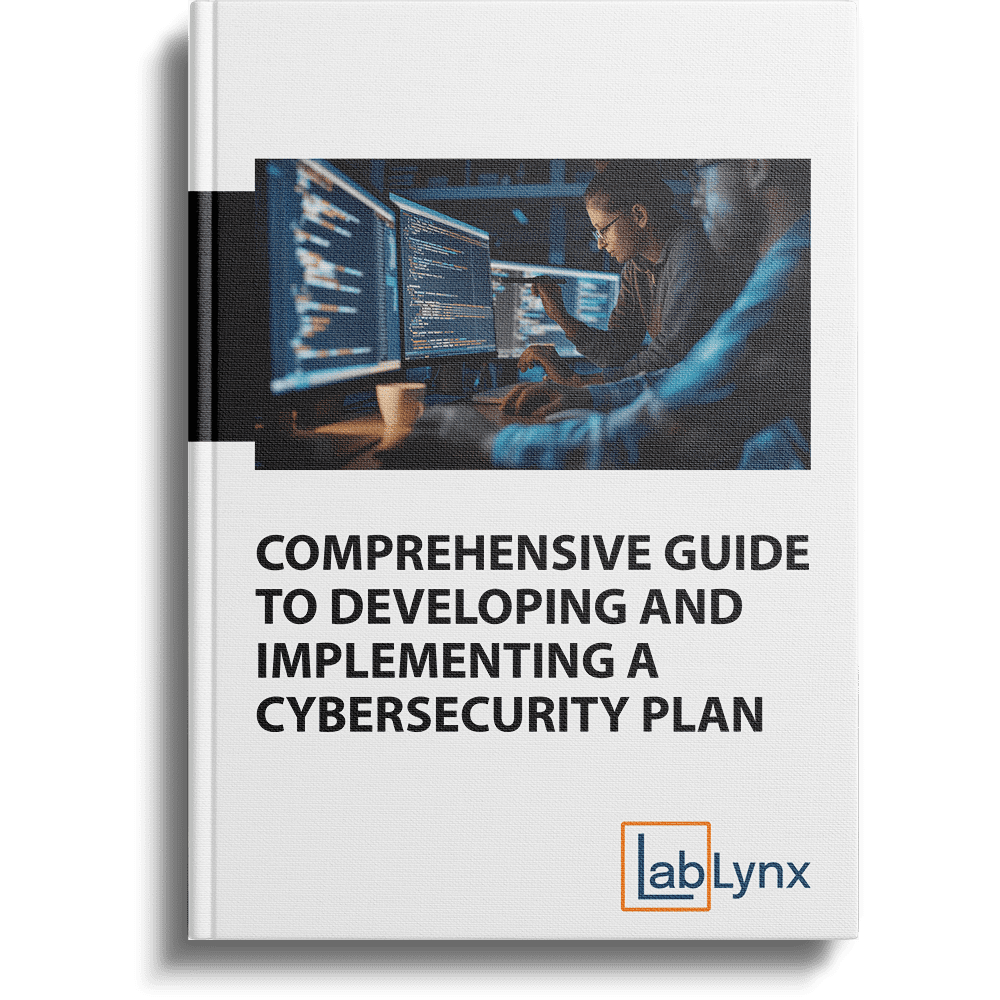Download Book For Free!
Resource Download
"*" indicates required fields

Safeguarding Your Lab’s Data: A Comprehensive Cybersecurity Plan Using Your LIMS
Modern laboratories are a treasure trove of sensitive data, from research findings and patient information to proprietary intellectual property. As cyber threats become increasingly sophisticated, protecting this data is paramount. A Laboratory Information Management System (LIMS) can be your lab’s frontline defense against cyberattacks, but a comprehensive cybersecurity plan is essential to maximize its effectiveness. This guide will walk you through the steps to create and implement a robust cybersecurity plan that leverages the power of your LIMS.
Why Cybersecurity Matters for Laboratories
Labs face a unique set of cybersecurity challenges due to the nature of their data and the diverse systems they use. The consequences of a breach can be severe:
- Data Loss or Corruption: Compromised data can render research invalid, disrupt operations, and even lead to legal liabilities.
- Financial Loss: Cyberattacks can result in direct financial costs like ransom payments or the expense of recovering data.
- Reputational Damage: A breach can erode trust among clients, partners, and the public, damaging your lab’s reputation.
- Regulatory Non-Compliance: Failure to protect data can lead to regulatory penalties and fines.
The Role of LIMS in Cybersecurity
A LIMS is more than just a data management tool; it’s a central hub for cybersecurity in your lab. A well-configured LIMS can:
- Control Access: Implement role-based access controls to restrict access to sensitive data based on user roles and responsibilities.
- Encrypt Data: Protect data at rest and in transit with strong encryption algorithms.
- Audit Trails: Maintain a detailed log of all actions taken on data, including user activity, for traceability and accountability.
- Vulnerability Management: Regularly assess and patch vulnerabilities in the LIMS software and associated systems.
- Data Backup & Recovery: Ensure regular backups of critical data to protect against data loss due to cyberattacks or system failures.
Developing Your Lab’s Cybersecurity Plan
- Risk Assessment: Identify potential threats and vulnerabilities, both internal (e.g., employee error) and external (e.g., phishing attacks).
- Security Policy Development: Create a comprehensive security policy outlining acceptable use of systems, password requirements, and incident response procedures.
- LIMS Configuration: Configure your LIMS with security best practices in mind, including access controls, encryption, and audit trails.
- Employee Training: Educate staff on cybersecurity risks, proper password management, and how to identify and report suspicious activity.
- Incident Response Plan: Develop a plan for responding to security incidents, including steps to contain the damage, recover data, and notify relevant parties.
- Regular Review & Updates: Continuously monitor your lab’s security posture, assess emerging threats, and update your plan accordingly.
Leveraging LabLynx LIMS for Cybersecurity
LabLynx LIMS is designed with cybersecurity in mind, offering features like:
- Advanced Security Controls: Granular access controls, strong encryption, and comprehensive audit trails.
- Compliance Support: Built-in tools to help you meet regulatory requirements like HIPAA and GLP.
- Cybersecurity Expertise: LabLynx’s experienced team can assist with risk assessments, policy development, and implementation.
Implementing Your Cybersecurity Plan
- Communication & Buy-In: Communicate the importance of cybersecurity to all lab staff and ensure everyone understands their role in protecting data.
- Phased Implementation: Roll out your plan in phases to minimize disruptions to lab operations.
- Ongoing Monitoring & Training: Regularly monitor your systems for vulnerabilities, conduct security awareness training, and update your plan as needed.
Partner with LabLynx for a Secure Future
LabLynx understands the unique cybersecurity challenges faced by laboratories. Our LIMS solutions and expert guidance can help you build a robust cybersecurity program that protects your data, ensures compliance, and gives you peace of mind.
Contact LabLynx today to discuss how we can help you safeguard your lab’s future.
